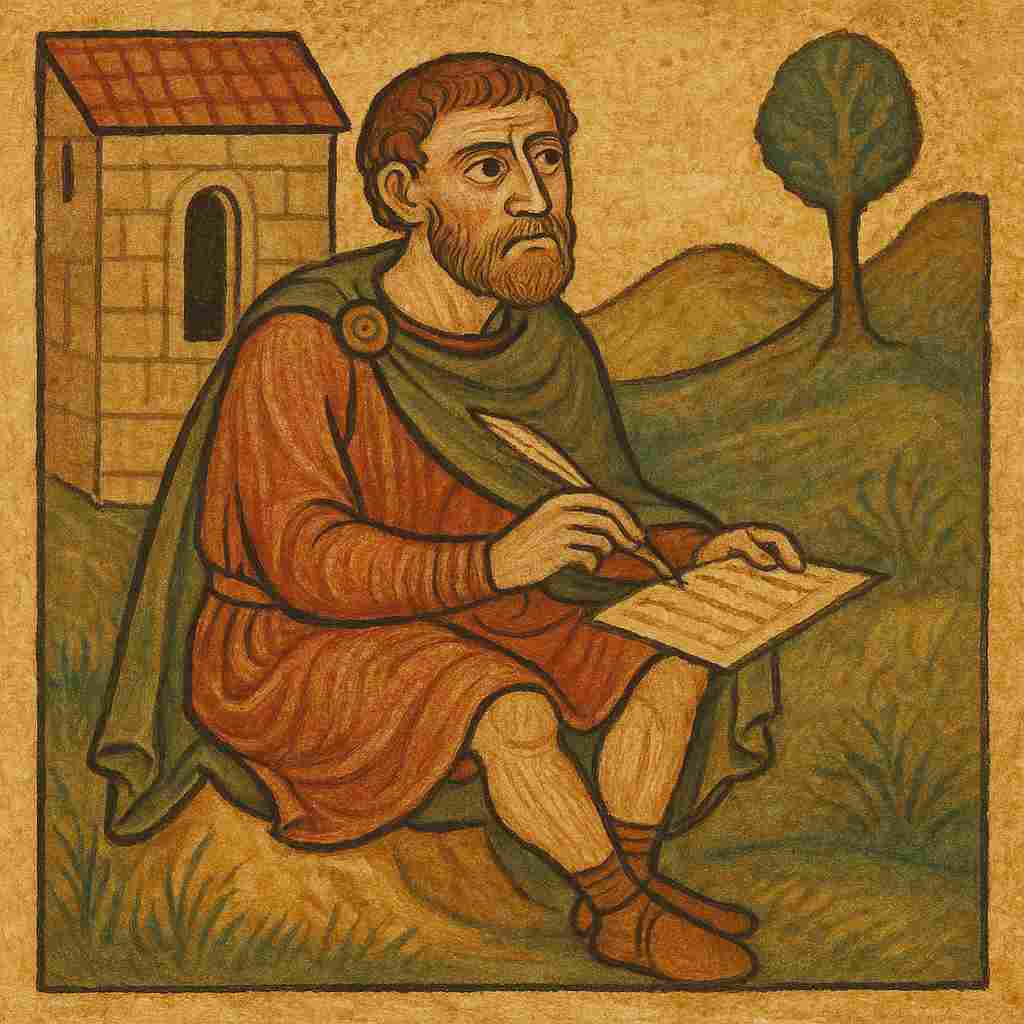Caedmon's Hymn (Old English)
Caedmon
657 to 684

Nu sculon herigean heofonrices Weard,
Meotodes meahte ond his modgeþanc,
weorc Wuldorfæder, swa he wundra gehwæs,
ece Dryhten, or onstealde.
He ærest sceop eorðan bearnum
heofon to hrofe, halig Scyppend;
ða middangeard moncynnes Weard,
ece Dryhten, æfter teode
firum foldan, Frea ælmihtig.
Caedmon's Caedmon's Hymn
Caedmon's Hymn stands as a cornerstone of Old English literature, representing not only the earliest recorded example of Old English poetry but also a significant moment in the fusion of Anglo-Saxon and Christian traditions. Composed in the 7th century, this brief yet profound hymn encapsulates the religious fervor and poetic sensibilities of early medieval England.
The poem's structure adheres to the traditional Anglo-Saxon alliterative verse form, with each line divided into two half-lines connected by alliteration. This form, deeply rooted in Germanic oral tradition, serves as a mnemonic device and emphasizes key words and concepts. The alliteration in lines such as Meotodes meahte ond his modgeþanc not only creates a pleasing rhythmic effect but also underscores the importance of the divine attributes being praised.
Thematically, the hymn is a celebration of God as the creator and ruler of the universe. The opening line, Nu sculon herigean heofonrices Weard, sets the tone for the entire piece, establishing the collective duty to praise the guardian of heaven. This sense of communal worship reflects the social structure of Anglo-Saxon society, where loyalty and obligation to a leader were paramount. By framing God in terms familiar to Anglo-Saxon listeners—as a Weard (guardian) and Frea (lord)—Caedmon makes the Christian deity accessible within the context of Germanic warrior culture.
The poem progresses through various aspects of God's creative power, moving from the abstract (his might and thoughts) to the concrete (heaven and earth). This progression mirrors the act of creation itself, from divine conception to physical manifestation. The repetition of ece Drihten (eternal Lord) emphasizes God's timelessness and sovereignty, contrasting with the temporality of human existence.
Linguistically, the hymn is rich in kennings, a characteristic feature of Old English poetry. Phrases such as Wuldorfæder (Glory-Father) and moncynnes Weard (guardian of mankind) exemplify this poetic device, which combines familiar words to create evocative compound expressions. These kennings not only demonstrate the poet's skill but also serve to elevate the language, making it worthy of its divine subject.
The poem's Christian content is unmistakable, yet it is presented through a distinctly Anglo-Saxon lens. The portrayal of God as a powerful ruler who establishes order (or onstealde) resonates with the Anglo-Saxon concept of a strong king. This blending of Christian theology with Germanic cultural elements illustrates the process of religious syncretism occurring in England during this period.
Caedmon's Hymn also reflects the cosmology of the time, with its reference to heofon to hrofe (heaven as a roof), depicting a world-view where the sky was seen as a protective covering over the earth. This image would have been particularly potent for an audience accustomed to the security provided by the great halls of Anglo-Saxon society.
The final lines of the poem, describing God as Frea ælmihtig (almighty Lord) creating firum foldan (the earth for men), encapsulate the relationship between the divine and the human in early English Christianity. It presents a God who is both transcendent and immanent, creating a world specifically for human habitation.
In conclusion, Caedmon's Hymn, despite its brevity, is a work of remarkable depth and significance. It serves as a testament to the literary and spiritual developments of 7th-century England, bridging pagan and Christian worldviews. Through its masterful use of alliterative verse, kennings, and thematic progression, the hymn not only praises the Christian God but also preserves a snapshot of a pivotal moment in English cultural history. Its enduring influence on subsequent Old English poetry and its role in shaping the religious landscape of medieval England cement its place as a crucial text for understanding the literary and spiritual heritage of the Anglo-Saxon world.
The gaps you see in Old English poetry, are a deliberate feature reflecting the poetic structure of the time. This style is known as alliterative verse and was common in Old English and other early Germanic poetry.
Each line is split into two halves (or half-lines), separated by a noticeable gap, called a caesura. This pause allowed singers or readers to take a brief breath and emphasise the rhythm.
Instead of rhyme, Old English poetry often relied on alliteration (the repetition of initial consonant sounds). The two halves of the line would often alliterate with each other, helping listeners focus on the sounds and rhythm. For example, in the line:
Nu sculon herigean heofonrices Weard
the alliteration of h in “herigean” (to praise) and “heofonrices” (heaven-kingdom’s) ties the halves of the line together.
This layout helped with memorisation and recitation, which was vital in a mostly oral culture. The caesura, alliteration, and rhythm acted as cues to aid memory and performance.
These gaps are thus a visual reminder of how early English poetry sounded and functioned. They’re integral to the poem’s rhythm and alliteration, distinguishing Old English verse from modern poetry’s use of rhyme and metre.
This text was generated by AI and is for reference only. Learn more
Want to join the discussion? Reopen or create a unique username to comment. No personal details required!



Comments
No comments yet. Be the first to comment!